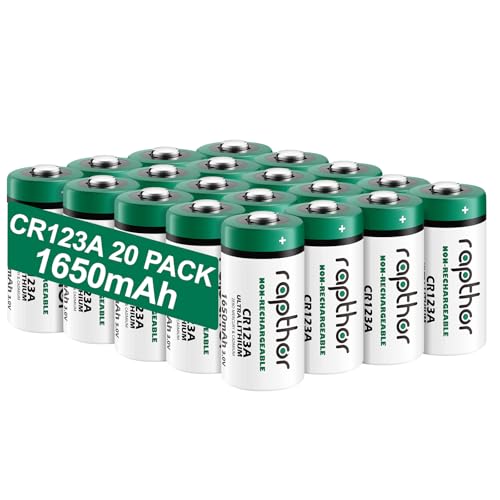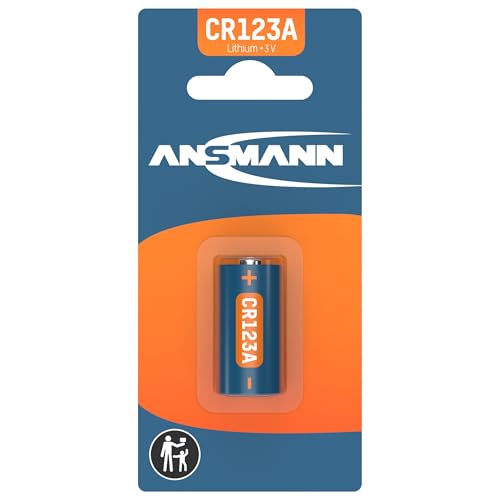Understanding CR123A Batteries: What You Need to Know
The Basics of CR123A Batteries
CR123A batteries are compact, cylindrical batteries commonly used in various electronic devices such as cameras, flashlights, and security systems. They’re known for their high energy density and long-lasting performance, making them a popular choice for high-drain devices that require reliable power over extended periods.
Voltage and Size Specifications
Typically, CR123A batteries have a nominal voltage of 3 volts and measure about 34.5mm in height and 17mm in diameter. This unique sizing helps them fit snugly in a range of devices, ensuring a secure connection and efficient power transfer.
Chemistry Variations
These batteries are available in different chemistries, such as lithium and alkaline. Lithium CR123A batteries provide superior performance, especially in cold temperatures, and have a longer shelf life compared to their alkaline counterparts.
How CR123A Batteries Outperform Other Options
High Performance for Demanding Devices
CR123A batteries are designed to deliver consistent power, making them an ideal choice for high-drain devices like digital cameras or flashlights. They outperform standard AA or AAA batteries by offering a higher voltage and capacity, which means you can capture more photos or use your flashlight for longer periods without interruption.
Temperature Resistance
One of the standout features of CR123A batteries is their ability to function effectively in extreme temperatures, ranging from -40°C to 60°C. This means they can deliver reliable performance whether you are trekking through snowy landscapes or using them in outdoor devices during summer.
Long Shelf Life
When it comes to storage, CR123A batteries shine with a shelf life of up to ten years. This longevity allows us to stock up and have reliable batteries on hand whenever we need them, without the worry of them losing their charge over time.
Choosing the Right CR123A Battery for Your Devices
Identifying Battery Requirements
Before purchasing CR123A batteries, it’s important to check the specific requirements for your devices. Some devices may function better with lithium-based CR123A batteries due to their superior discharge characteristics. Understanding these requirements ensures you’re selecting the best battery for optimal device performance.
Brand Considerations
While many brands produce CR123A batteries, prioritising quality is essential. Not all batteries are created equal, so opting for reputable manufacturers can make a significant difference in both performance and lifespan. We recommend focusing on trusted brands that are known for their reliability.
Package Sizes
CR123A batteries often come in various pack sizes. Depending on our usage, we can select from single packs for occasional use or bulk packs for regular consumers. Buying in bulk is usually more economical if you frequently use these batteries.
Maximising Battery Life: Tips for CR123A Users
Storage Practices
To maximise the lifespan of CR123A batteries, proper storage is crucial. Keeping them in a cool, dry place away from direct sunlight can help maintain their charge and effectiveness. Avoid exposing them to extreme heat or moisture, which can reduce their performance.
Using Devices Efficiently
When using devices powered by CR123A batteries, consider turning them off when not in use. For example, if you have a digital camera, switching it off during breaks in shooting can help conserve battery life. Limiting features like flash usage can also extend the runtime.
Monitor Battery Performance
Keep an eye on how long your batteries last in each device. If you notice a significant drop in performance, it might be beneficial to replace the batteries or check for any underlying issues with the device itself.
Environmentally Friendly Disposal of CR123A Batteries
Understanding Battery Disposal
CR123A batteries should not be disposed of in regular household waste due to the chemicals they contain. Instead, we should locate appropriate recycling facilities or collection points in our community where we can dispose of them safely.
Recycling Options
Many retailers and local recycling programs offer dedicated battery recycling services. When replacing your batteries, consider asking in-store about recycling options. This not only helps in protecting the environment but also promotes responsible consumer behaviour.
Educating Others
By informing friends and family about the importance of proper battery disposal, we can collectively contribute to environmental sustainability. Encouraging recycling and responsible disposal habits ensures that hazardous materials do not end up in landfills.























